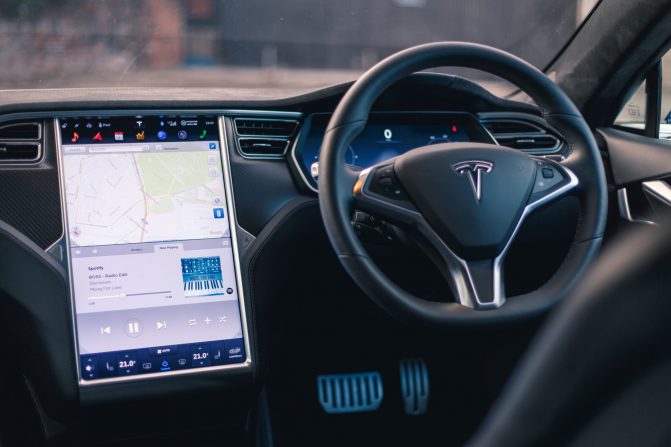Technology has been the driving force in a majority of industries all around the world, and this isn’t any different in the automobile industry. Over the last 25 years, the industry has experienced a variety of technological advancements that have lead improvement of the driving experience. Some of these advancements have gone on to contribute to the introduction of the electric ignition, cruise control, GPS navigation, automatic wind shield wipers, sensors, power steering and so much more. This article is going to explore some of these technological advancements that have impacted the automobile industry.
Sensor/Camera Technology
The introduction of sensor technology was a massive game changer in the automobile industry and the first automobile manufacturers that took advantage of this technology benefited from it the most in terms of sales. Sensor technology worked along side camera technology to create a safer driving experience for even the clumsiest of drivers. The most common use of the technology is for parking; it allows the driver to reverse or park comfortably without causing damage to surrounding objects or people. It’s worth noting that parking sensors are not be the only sensor feature in a modern car: you can also get a speedometer sensor, oxygen sensors and more; but the rear view camera was the answer to the question ‘How can a driver be 100% sure what exactly is behind them before they reverses?’. The introduction of these cameras was literally a lifesaver and it is now a norm for new vehicles to be fitted with them.
Energy Efficient
Driving these days is all about efficiency; the modern driver is more concerned about how far they can go whilst using as little fuel as possible, and manufactures have accommodated this need by putting more emphasis into the fuel efficiency of their vehicles. As drivers become more environmentally conscious and the government creates stricter environmental laws, manufactures have been forced to clean up their act and address these concerns. The automobile manufacturers response to this concern was to start producing fuel efficient cars that use less fuel and release less pollution.
Smart Car
If you have bought a new car in the last 15 years, then the chances are you have come across a smart key. These keys make it possible for the driver to start their cars without inserting the key into the ignition. The driver simply pushes a button on the key fob and as you approach the door and touch the handle it unlocks and the car starts with the touch of the starter button. If you lose your key in the US there are many car key replacement companies that can help you out.
On-board Diagnostics
On-board diagnostic capabilities have been used in since the 1980s but after a few years this evolved into what we are used to seeing today. The new and improved on-board diagnostics not only test the vehicle’s emissions, they are also able to show mechanics and other technicians exactly where a problem is within a car using specific codes.
Bluetooth Capabilities
The ability to wirelessly connect your phone to your car was not truly appreciated until phones got smart and cars were fitted with in-car kits. Today almost every phone and car manufactured after 2010 is designed to be able to connect through Bluetooth.
Tyre Pressure Monitoring
Tyre pressure monitoring was made mandatory in America in 2007 and other countries soon after that. This new law made it possible for every car manufactured after 2012 to be fitted with a tyre monitoring system. The system alerts the driver through the vehicle’s information centre; and other technological advancements have made it possible for the driver to pull over at an appropriate stop, use the internet on their mobile phone to find a garage, and call for a mobile tyre fitting. There are two types of tyre pressure monitoring systems: the TPMS uses the wheel speed sensors; and the anti-lock braking system monitors the tyre spinning and illuminates a light if it needs to alert the driver. Direct TPMS uses the pressure sensor that is fitted in each wheel to measure the pressure of the tyres.
Cruise Control
Cruise control systems allows the car to maintain its speed and to keep a safe distance from surrounding cars all without the driver’s intervention.
GPS Navigation
Remember when a major component of all cars was a big map of the country under the front seat or in the glove box? Well gone are those days – now most cars are fitted with a GPS system and, if not, one can be fitted to your car for a charge. These GPS systems allows the driver to simply enter an address and follow the directions being given.
Tips and Advice
Before the internet drivers had to either be a specialist in cars or take their car to a mechanic if there was ever a problem. However, as the internet became more accessible to a variety of people, communities started to build with like-minded members. They created a platform where drivers can look for information on any issue they are facing with their cars or even talk to other people with the same issues to find out what they did to fix the issue.
This is not even half of how technology has impacted the automobile industry and that list is still growing, with technology developing faster than we will ever know – making an ever better and safer driving experience.








